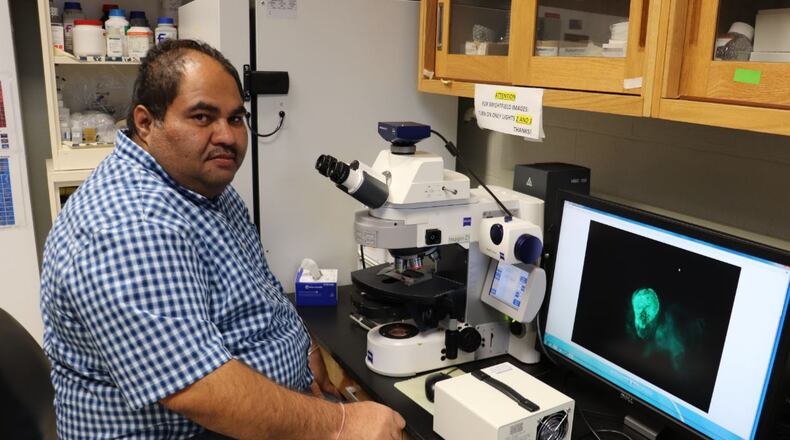LOCAL: Miami County overdoses up in 2017
Singh is the interim director of the Center for Tissue Regeneration and Engineering at Dayton and under the grant, Singh’s lab in the TREND Center identified genes responsible for the three-dimensional patterning process along the dorso-ventral axis — one of three anatomical axes to which cells are assigned during early eye patterning.
His research successfully identified how the boundary between the eye and the head structure is formed. It also identified a transcription factor, which controls gene expression, that could play a role in where the eye is placed on the head.
RELATED: University to open Trotwood satellite office
“What we are trying to understand now is how these genes control this process of delineating three-dimensional structure from a monolayer organ in the earliest stages of development,” he said.
His lab will also test the role of the transcription factor’s human equivalent, which is involved in cancer growth and metastasis.
“Understanding how this transcription factor works will not only have implications on birth defects of the eye, but it will also help us understand how it is involved in the growth of cancer,” Singh said. “These are two major things that might emerge from these studies.”
About the Author
